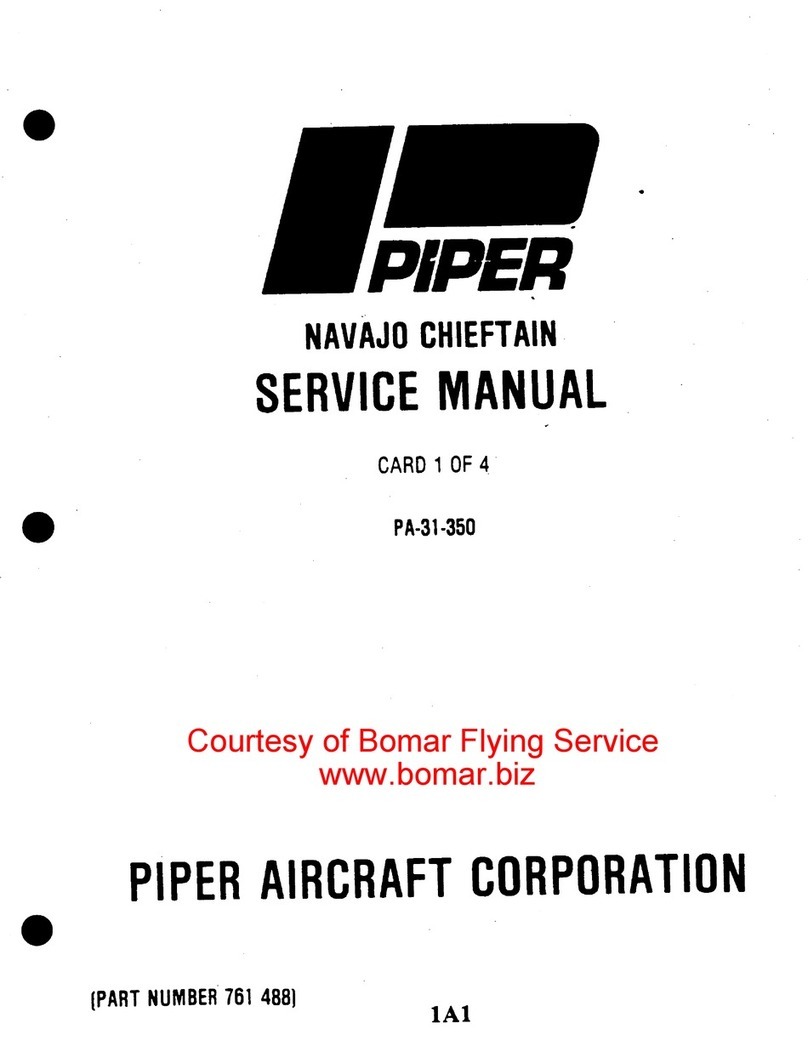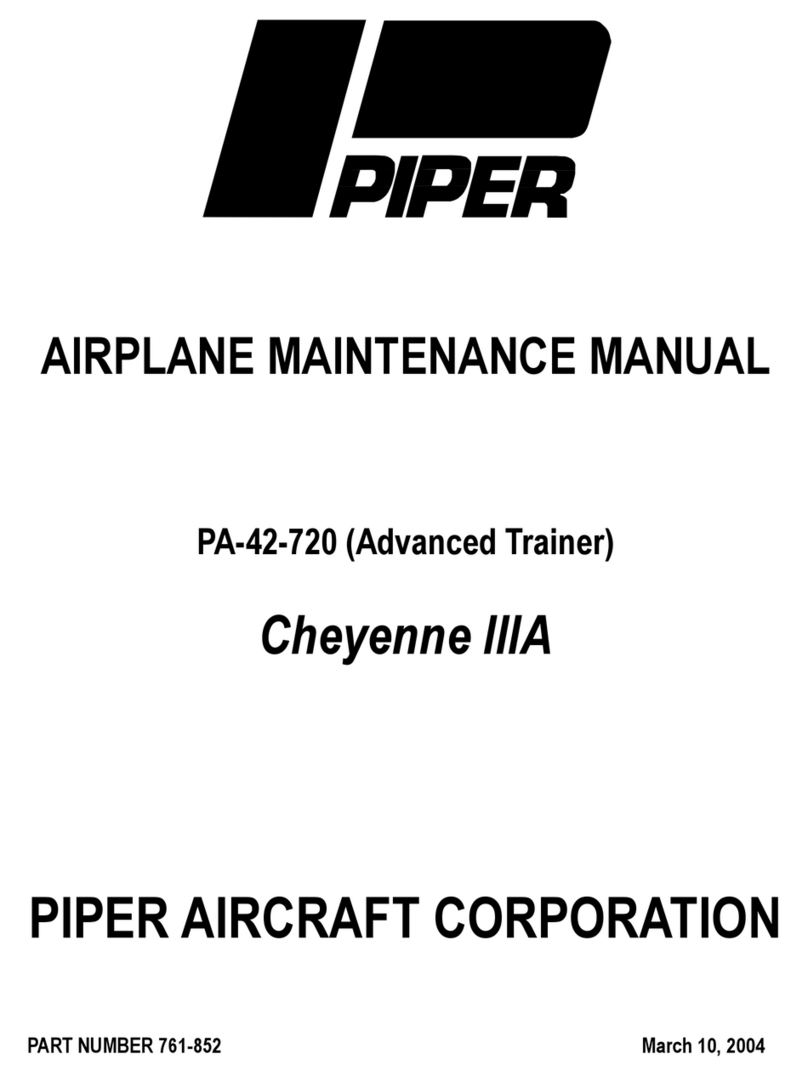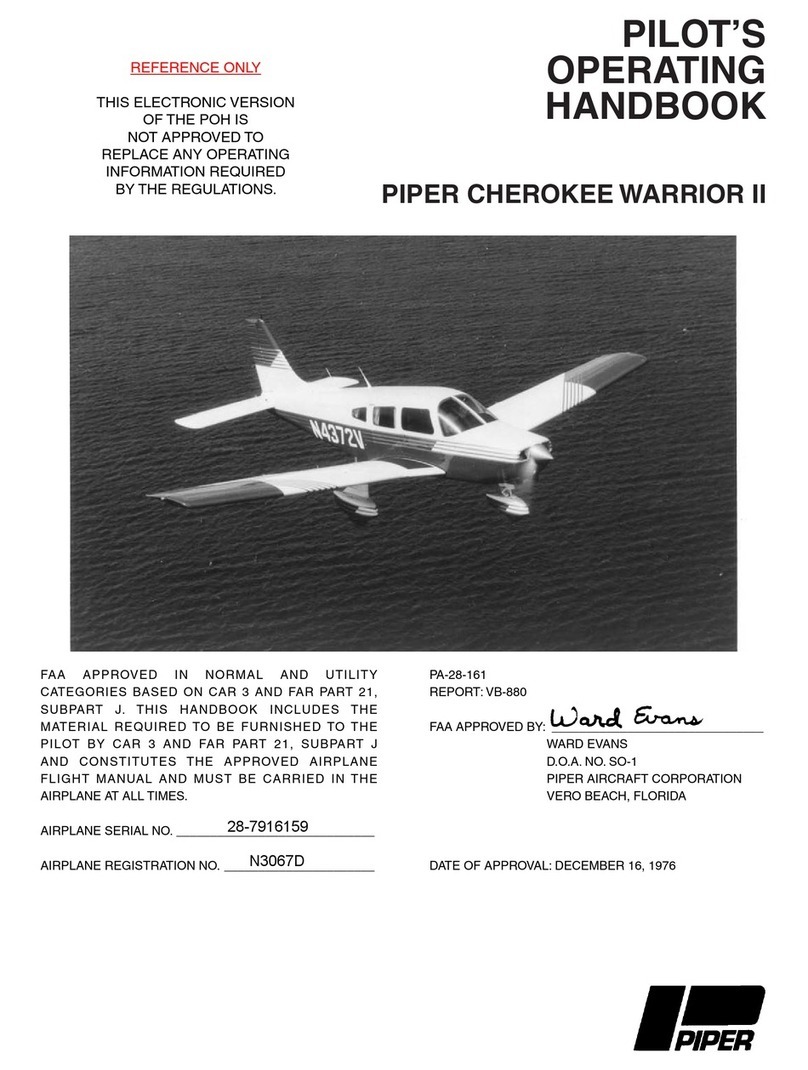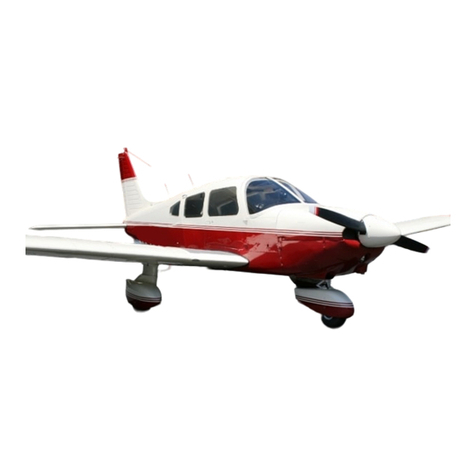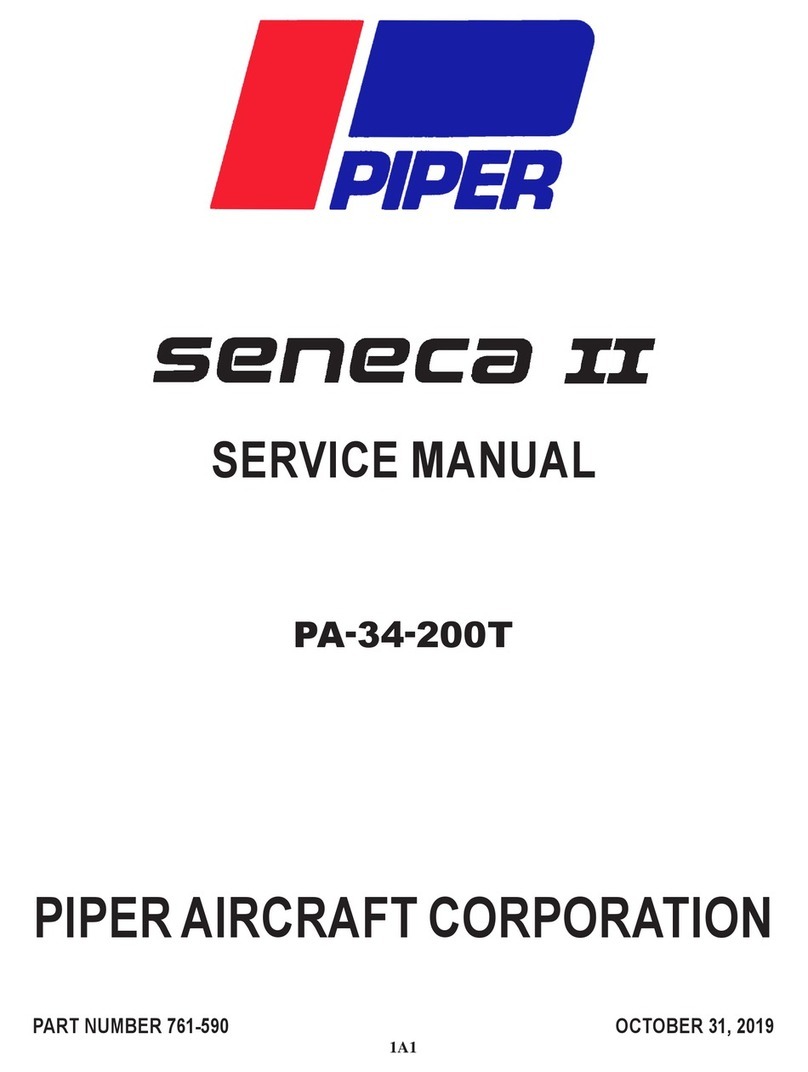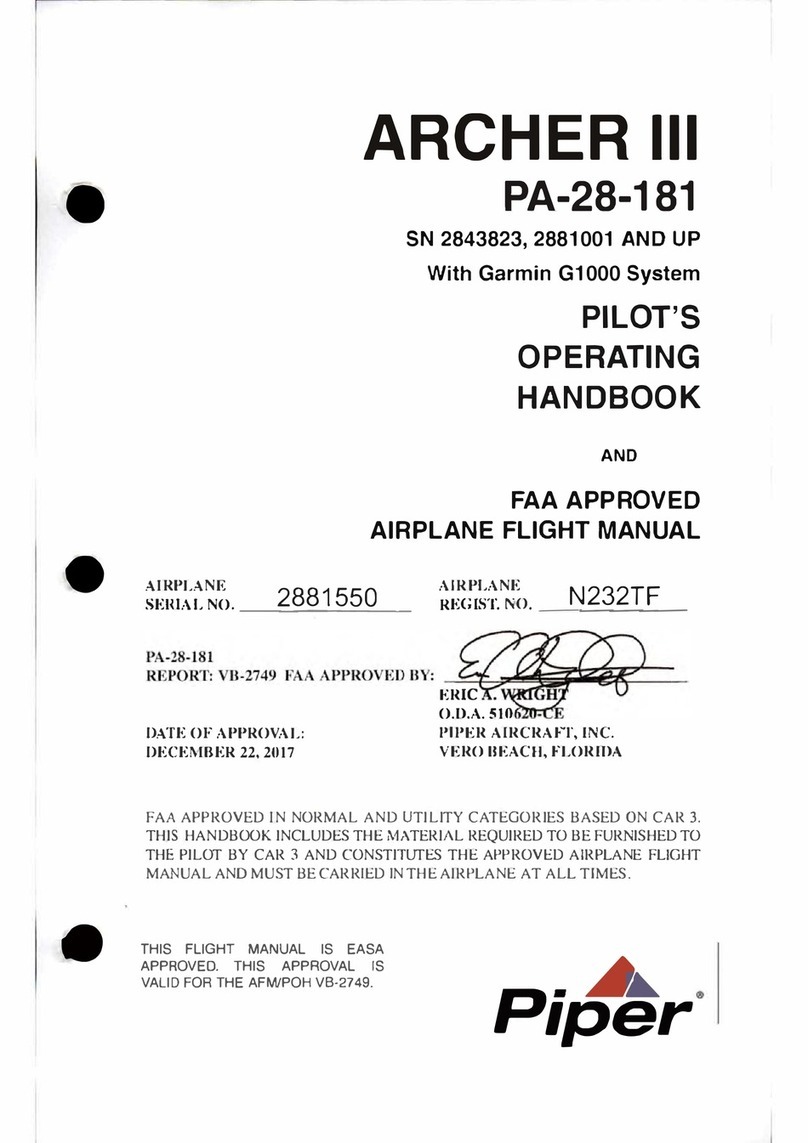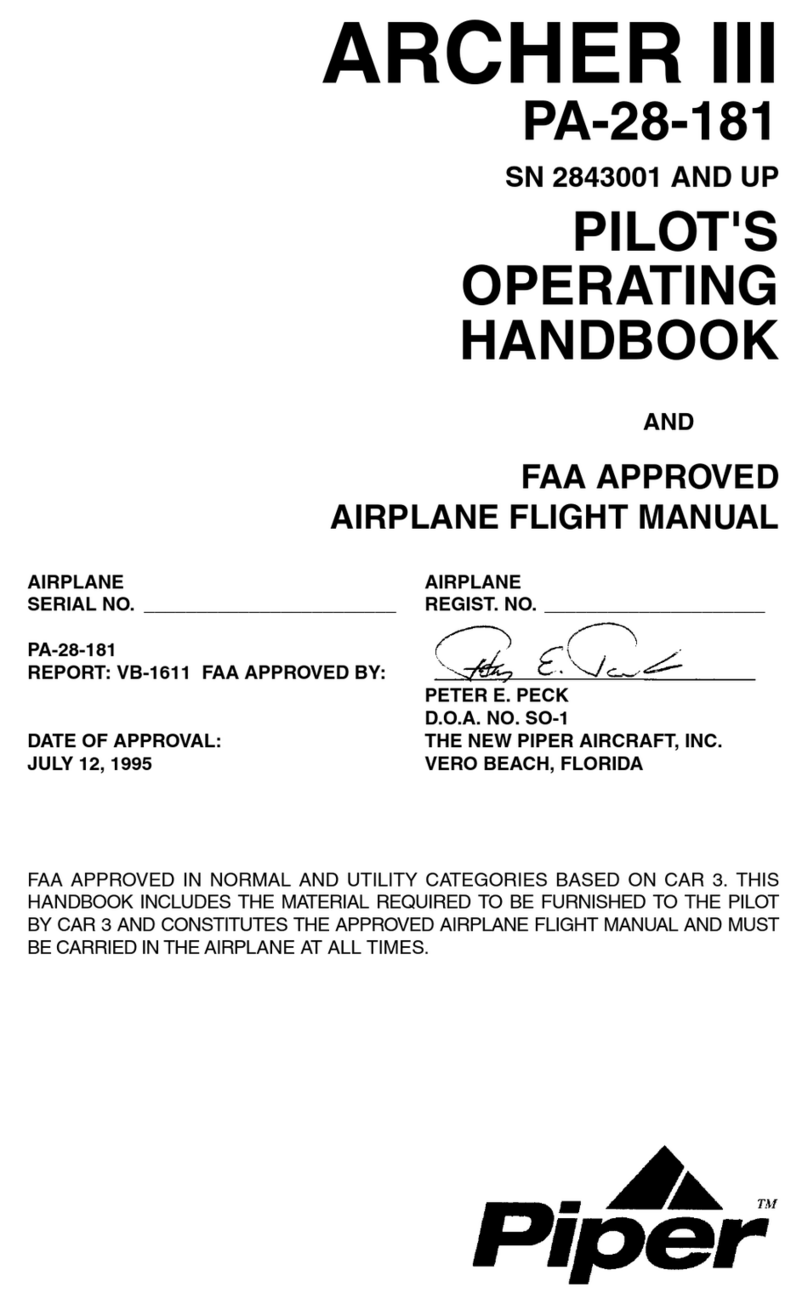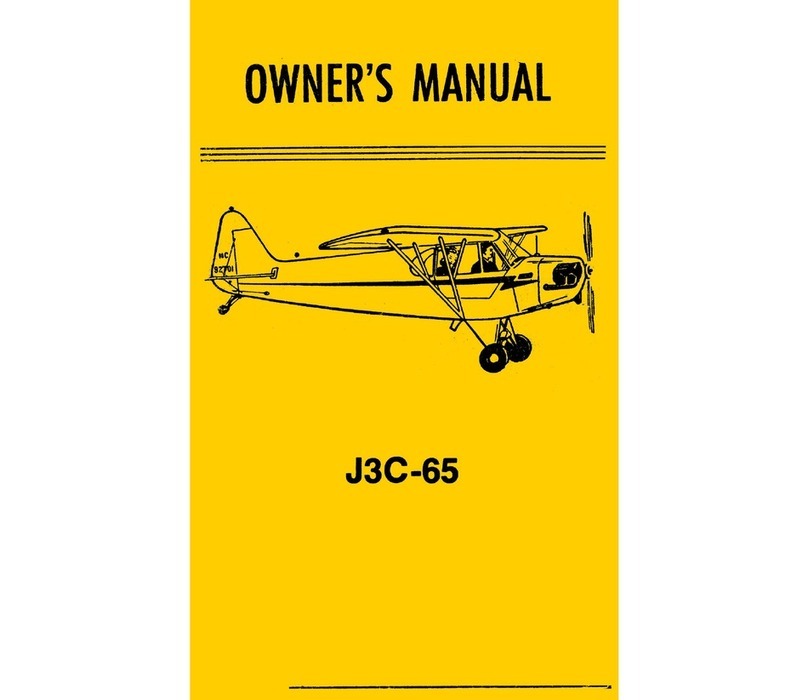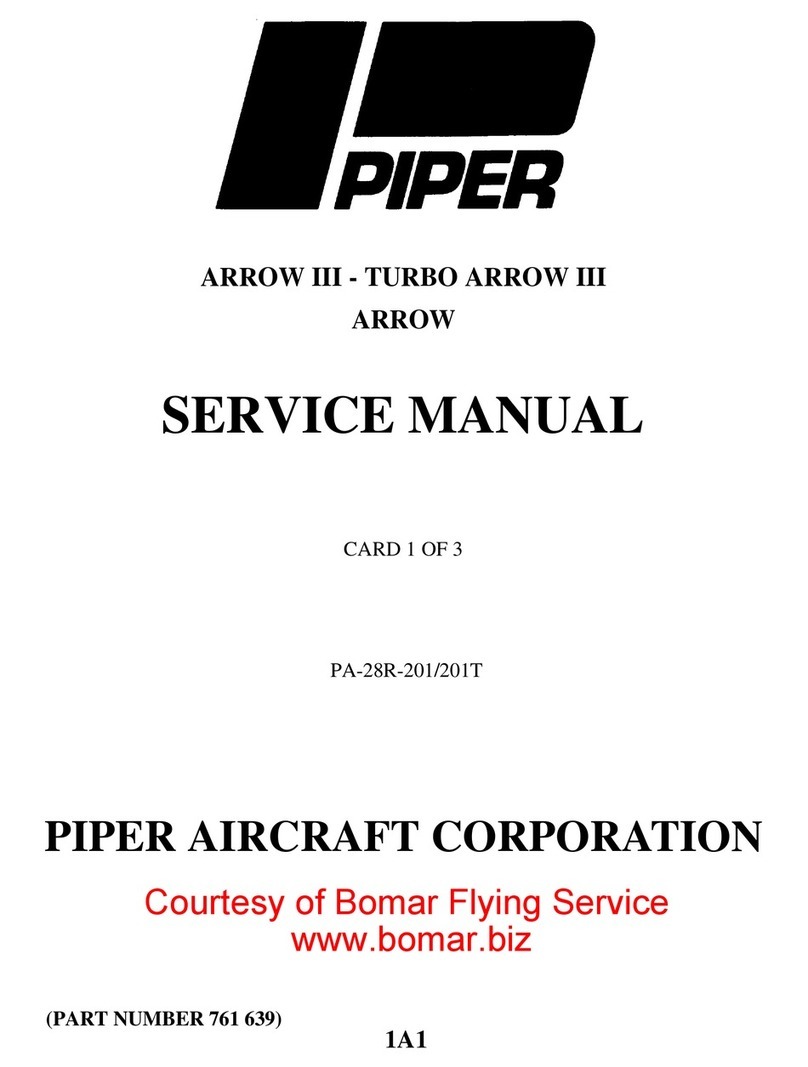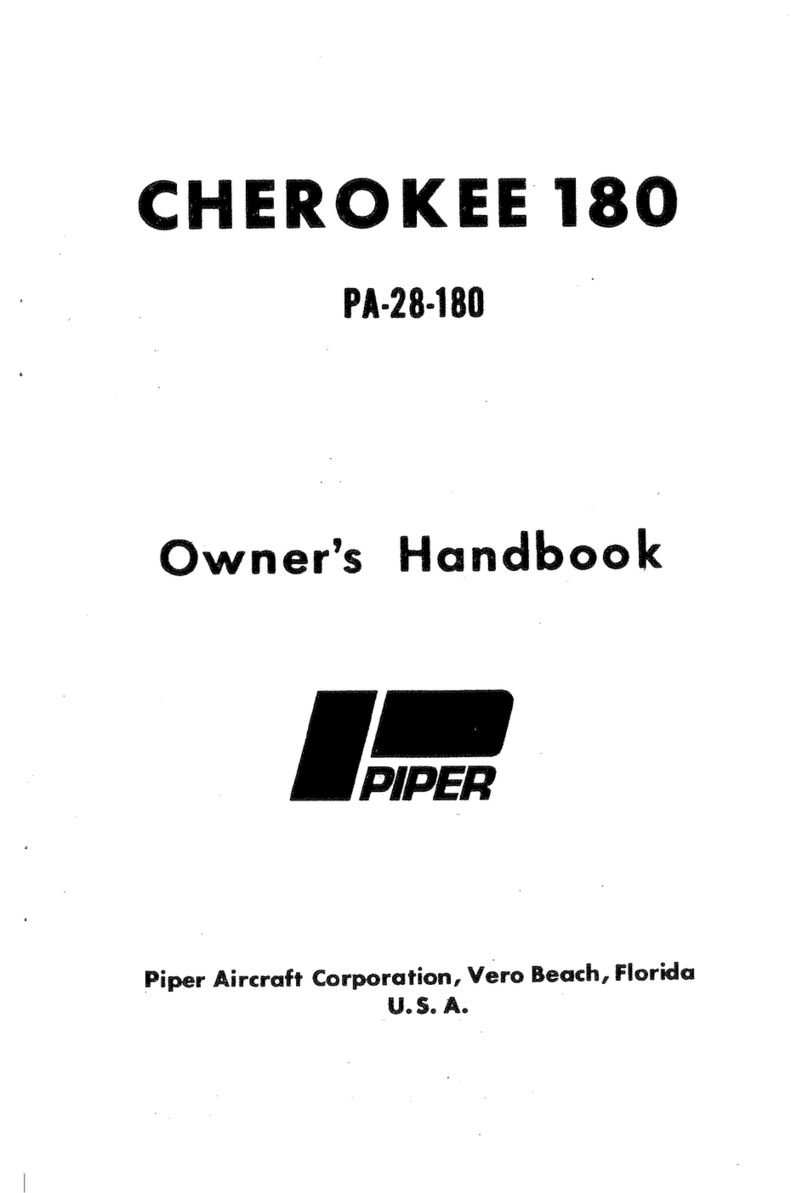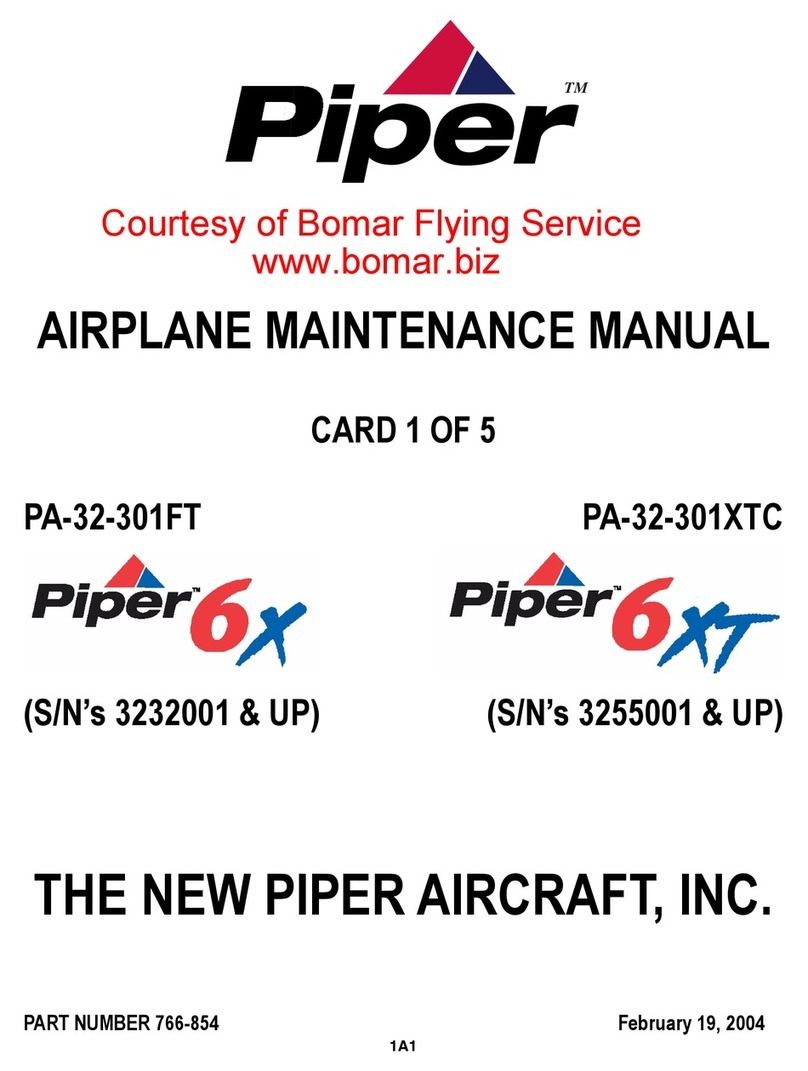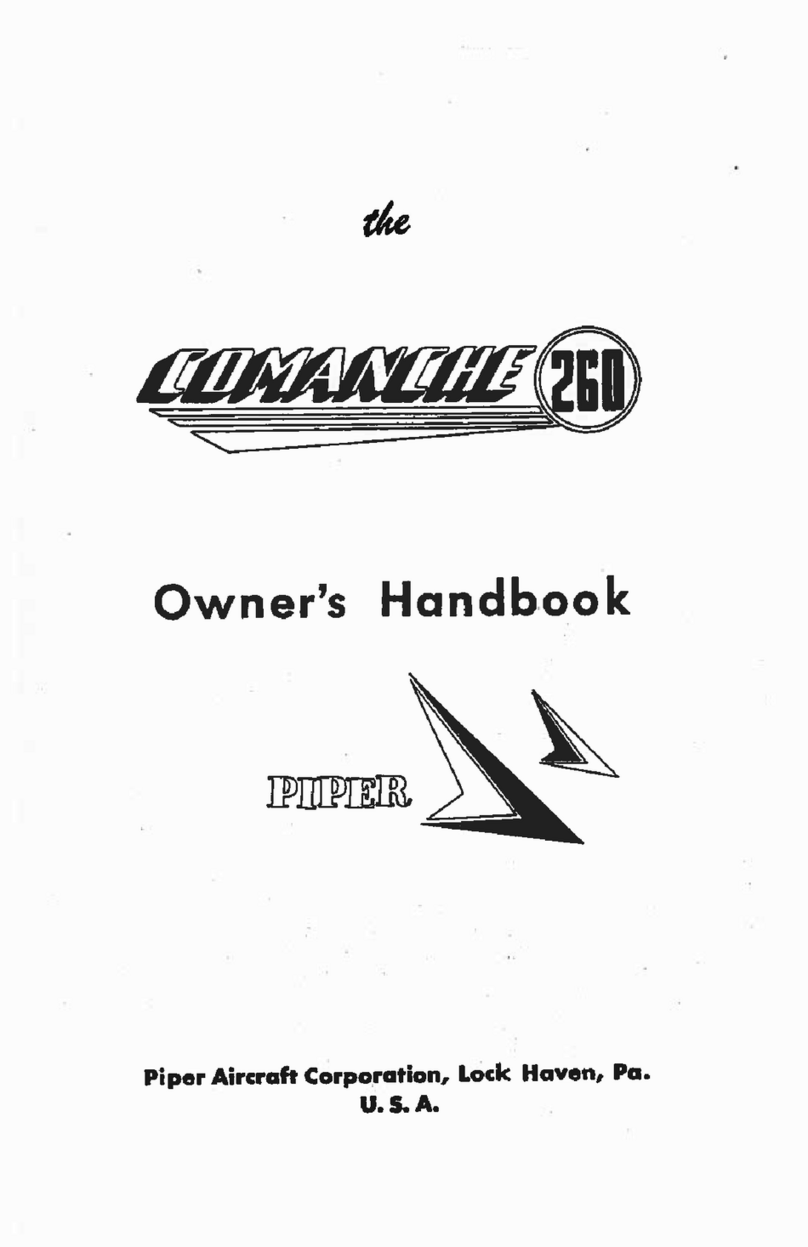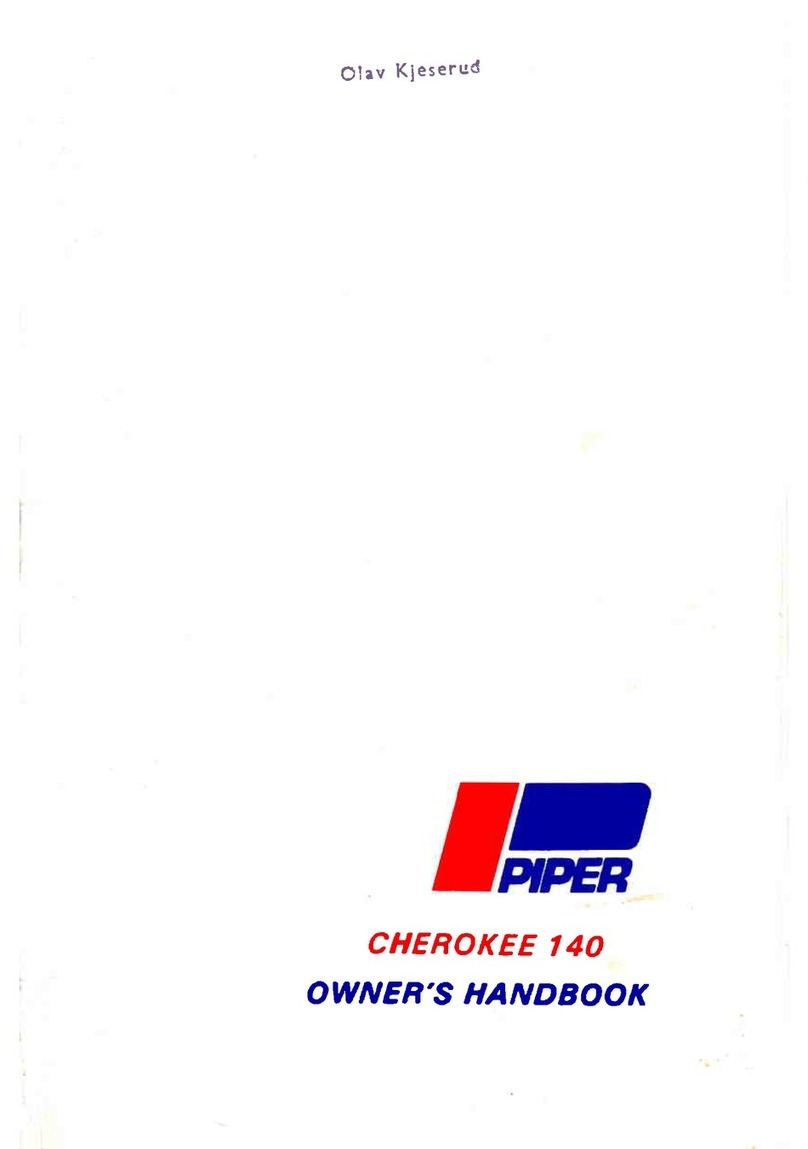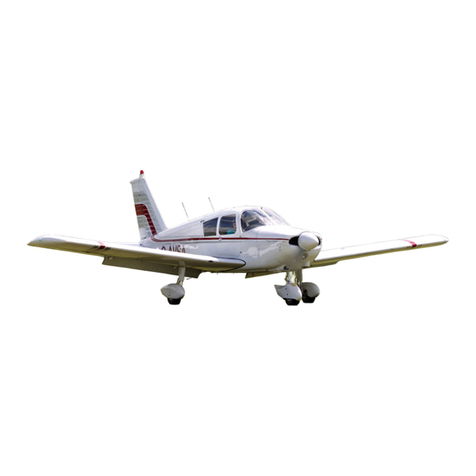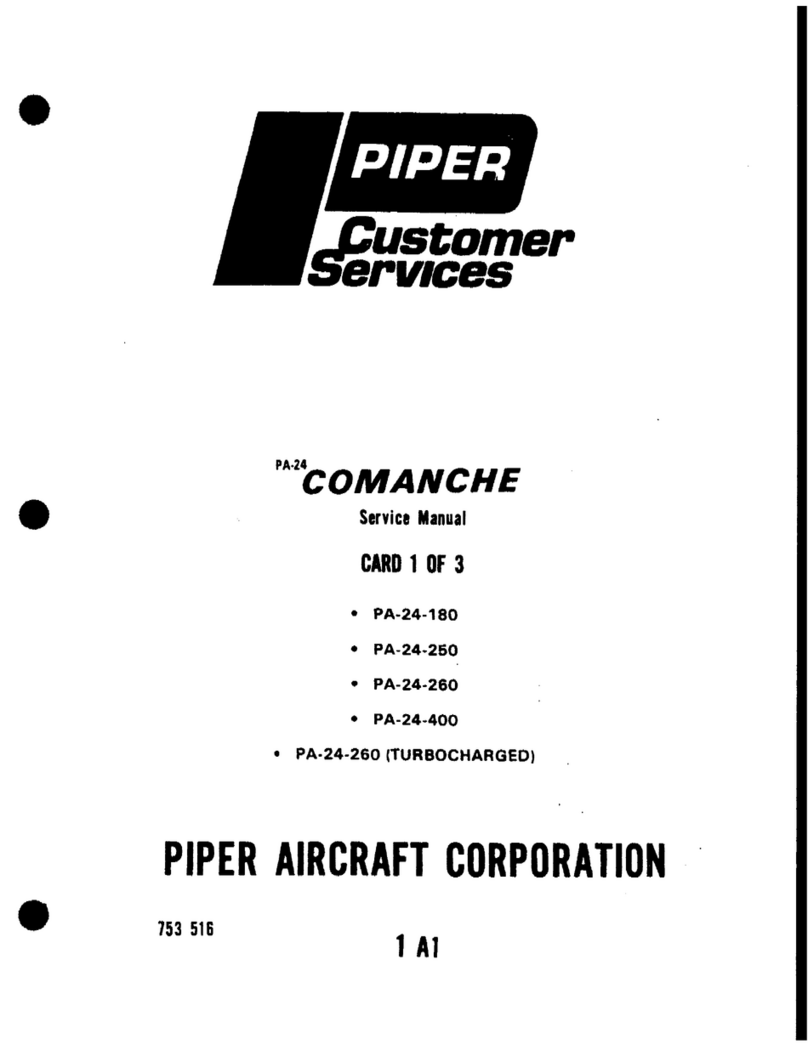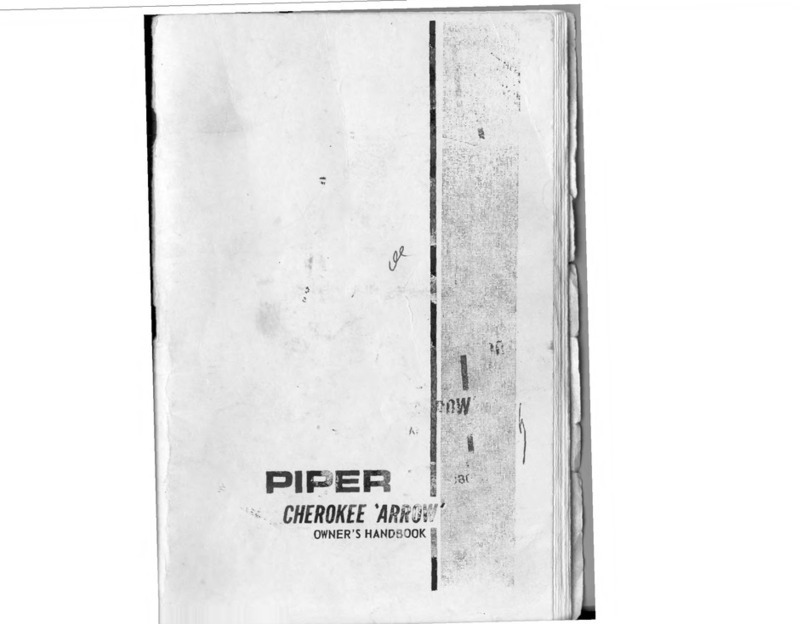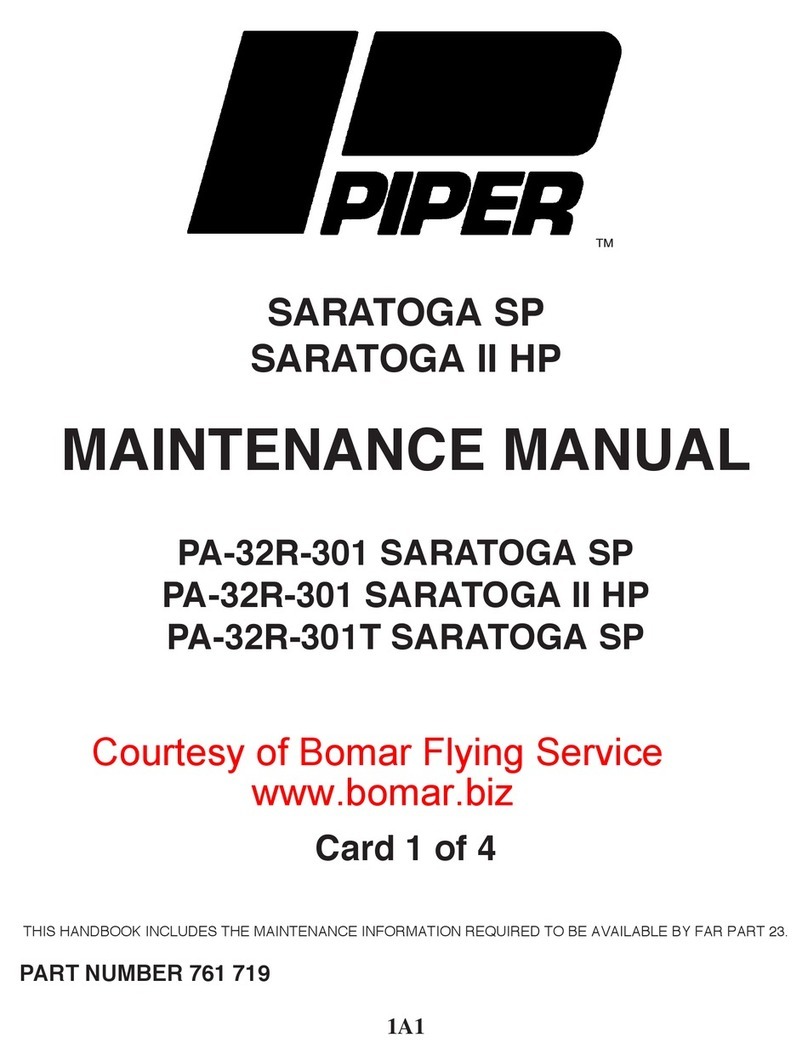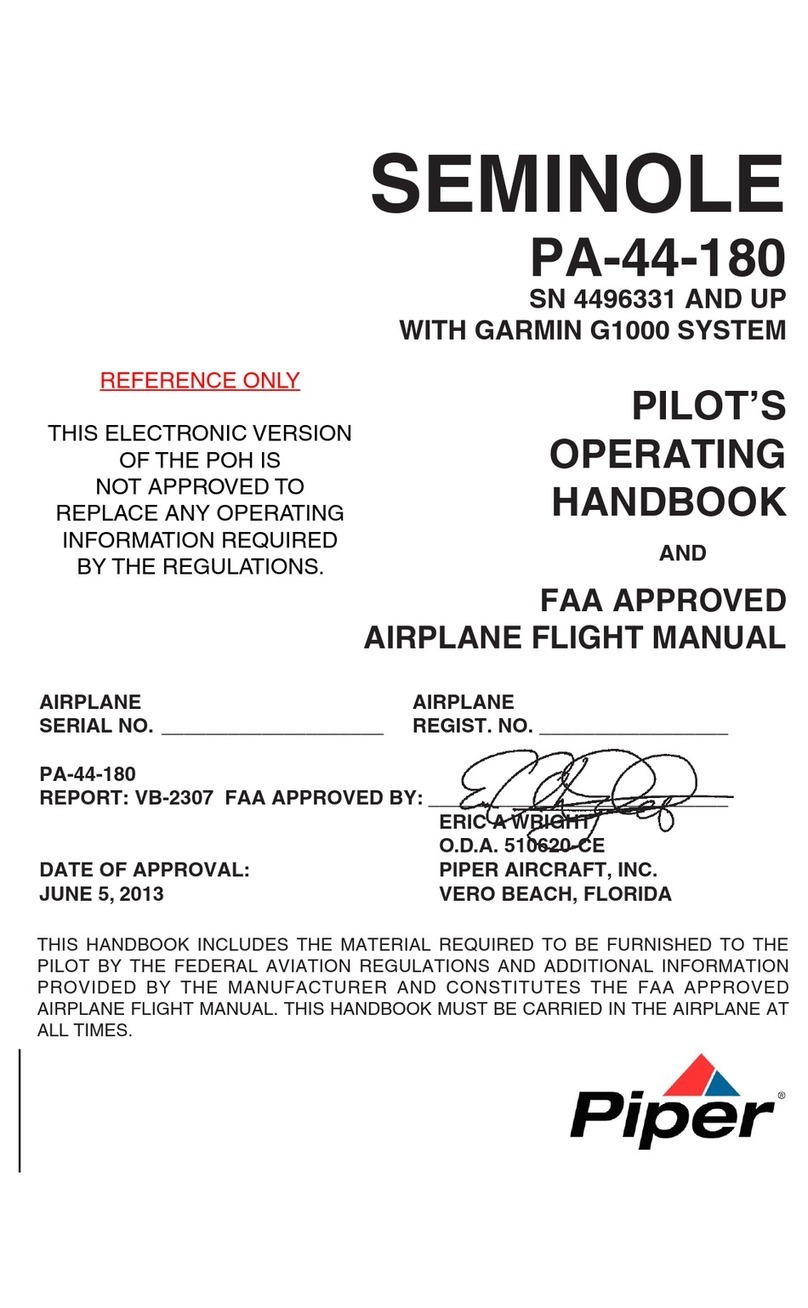mI!‘i C%wcm C/R
-
TABLE OF CONTENTS
SECTION I
Log of Revisions
SECTION H
. . . . . . . . . . . . . . . . . . . , .. . . . . -. . . . Page
. . . . . . . . . . . . . . 1
Limitations . . . . . . . . . . . . . . . .
A. Engines ......._.. ::: :...*.:: :: :.‘...““““‘.......... 3
B. Fuel . . . . . *. --. . . . -‘- . . . . . . * . .c. Propellers .~;~~;........................~.............::: 3
. . ~
D. Cowl Flaps . . . . . : 1 1 1 . . . * . . . . . 3
- . . . * . * . *--.**-.**. * . * . . . . . . 3
E. Instrument Markings (Power Plant; . 1 1 * . . . . * . . * * * * - * . * . . . . * * . * * - . . . .
F. Airspeed Limitations and Indicator Markings (CaEbh;ed’Airspeed)’ * 1 1 1 : : 1 : 1 : : 1 1 1 3
G. Flight Load Factors . _
3
H. Maximum Weight . _ . : : : 1 1 : : 1 : : : : : 1 1 1 : : 1 1 : 1 : : : 1 : : : : 1 ’ - ’ . ’ . . ’
4
I. C. G. Range 4
,. Mane”“ers , : 1 1 : : : : . . . . . . . . . . . . . . . . . . . . . . . . . . . . . . : : : : : : : : 5
K. Wing Flap Settings . . 1 . . . . 5
. . . . . . . : . . . . . . . . . . . . . . . . . . . . . . . . . . - . . .
L. UnusableFuel ..:;I: ....._.. :::::: . . . . . . . . . . . . . . . . . . . . . . . . 5
M. UsableFuel 5
.-- **- * - *. . . . . . * . . 1
-N. Placards . . II::;::: . . . . . . . . . . . . . . . . ..~ . . . . . . . . . . . . . . 1:::: 5
0. Instrument Markings . . . . . . . . . 5
. . . *. .. *‘- -*---*‘-** . . * . * * . . 5
P. LandingGearDownLigh;.::::::::::::::::::::::::::::::::‘..” 6”
. . . . .
SECTION III
Procedures . . . . . . . . . . . . . . . . .
A. Standard Procedures . . * . . * . . . * *----**.-* . . . - * -* *. *
1. StoppingEngines . . . . . . 7
2. Warning
.::::::::: . . . . . . . . . . . . . . . . . . . . . . . . . . . . . 7
. . * - . * * . . . . . . * . - *
3. Spins .::::: . . . . . .._................ ~...:::::::::::: 7
. . - . * . - . . 7
* *. . . . . *. * * * * * - - * * -
B. Systems Operation and Checks
. . . . . . : . . . . . 7
1. Voltage Regulating and Alternator System for’A&raft’skrial Numbers j9:1’ ’ . . ’ ’ .
thru 39-145 _ .
9
~*~~1*~~--* . . . . . . . . .
2. Alternator Paralleling System for Aircraft Serial Numbers 39-146 and up ’ : : 1 : : 1 1
3. Circuit Breakers . . . . . .’
9
4. FuelManagement 9
.;...:: . . . . . . . . . . . . . . . . . . . . . . . . . . . 10
5. Manual Extension of: i&ding Gear . . . : : : : : : : : . ’ * ’ ’ * ’ ’ * * . . ’ . ’ * ’ . * lo
. . . . . . . . * - * * * * * *. * . 11
C. Emergency Procedures . .
1. Detecting a Dead Engine . 1 ; 1 : 1 : 1 1 : 1 : 1 . . . . . . - . . . . . . . . . . . . . . . . 13
2. Feathering Procedure . . . . . . . . . . . . . . . . . . . .
3. Unfeathering Procedure
. . 1 . . . . 13
. .
4. Engine Failure During Take-Off
. : 1 1 : 1 1 . . : : 1 : : 1 1 ’ ’ ’ . * * ’ ’ * . ’ . * ’ ’ . . ’ :3”
.-*--l-*m * - . * * * * . -
5* EngineFailureDuringaimb ..::::::::::‘.‘..-....‘.......... I4
6. Single Engine Landing . . * . . . . . **-***-*-- . . . 14
7. Single Engine Go-Around’ : 1 ; 1 : ; : 1 : ; 1 ; : 1 - * * * * * * * * * . . + - * . * - . . * l4
-**--.-.-- ----*--*** . 14
FAA APPROVED November 28, 1969
RElSSUED: June 1, 1970
REVISED: November 30,197l
REPORT: 1605 PART I P -- .-. -
MODE1 .+
/’
